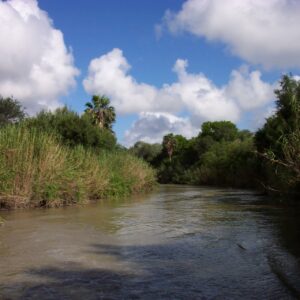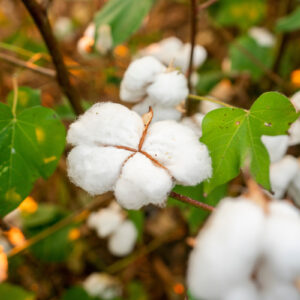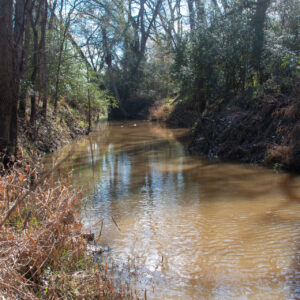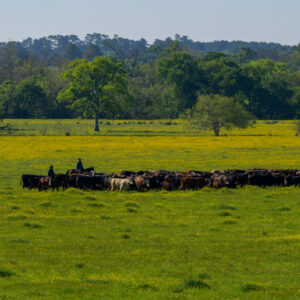Replicated Conventional Cotton Variety Demonstration
Cooperator: Jim Parkhill – 2001
Steve Young, Steve Davis, Randy Boman,
Mark Kelley, Alan Helm, and Mark Stelter
County Extension Agent-Agriculture-Crosby County,
Extension Agent-IPM, Crosby/Floyd Counties,
Extension Agronomist-Cotton, and Extension Assistants-Cotton
Crosby County
Summary: Significant differences among varieties were observed for lint and seed turnout, lint and seed yield, and economic parameters except seed value and ginning cost (Table 1). Significant differences were also indicated for most HVI lint quality parameters observed, with the exceptions of uniformity, leaf, +b, and color digit 2 (Table 2). Lint yields ranged from 860 to 1221 lb/acre. Lint loan values ranged from $0.4952/lb to $0.5570/lb. Lint values ranged from a low of $465.40/acre to $680.26/acre. The range of total value/acre (lint value plus seed value) was from $533.04 to $768.31, and net value/acre (total value minus seed costs) ranged from $479.68 to $698.06. These data indicate that substantial differences can be obtained in terms of net value/acre due to variety selection.
Objective: The objective of this project was to compare yields, gin turnout, and fiber quality of popular conventional varieties on a large-scale basis; and to determine the economics of commercial varieties in producer-cooperator fields.
Materials and
Methods: A randomized complete block with 3 replications was used. Seeding rate was 15 lb seed/acre. Plot size was four 40-inch rows by 1290 ft in length. Varieties were planted on May 15, 2001. Treflan was applied preplant incorporated at a rate of 1.5-pt/acre on March 23. No additional herbicides were applied. The demonstration was furrow irrigated a total of three times, once each in June, July, and August.
Rainfall amounts during the growing season were:
April: 0.03″ August: 1.23
May: 3.18″ September: 0.41″
June: 1.78″ October: 0.04″
July: 0.42″
No insecticides were applied except for active boll weevil eradication, and no fertilizer was applied. A tank mix of Finish 6 at 21 oz/acre, Ginstar at 7 oz/acre and 1.5 percent v/v surfactant was applied at 60 percent open bolls on September 28. Plots were harvested on October 15 using a commercial John Deere 7450 with field cleaner. Harvested material was dumped into a weigh wagon equipped with integral digital scales to determine individual plot weights. Plot yields were adjusted to lb/acre. Grab samples were taken by plot and ginned at the Texas A&M Center at Lubbock to determine gin turnouts. Lint samples were submitted to the International Textile Center (ITC) at Texas Tech University for HVI analysis, and USDA Loan values were determined for each variety by plot. Seed value was based on $85/ton. Ginning costs were based on $1.50 per cwt. of bur cotton and do not include bagging, ties and checkoff. Systems costs were determined by variety using manufacturer’s suggested retail prices for seed, and was based on 15 lb/acre seeding rate.
Varieties planted at this site included:
1. AFD Raider 271
2. AgriPro 6101
3. All-Tex Atlas Plus
4. Dyna-Gro 256
5. Deltapine 2156
6. All-Tex Excess Plus
7. FiberMax 5013
8. FiberMax 5015
9. Paymaster HS26
10. Tamcot Sphinx
Results and
Discussion: Significant differences among varieties were observed for lint and seed turnout, lint and seed yield, and economic parameters except seed value and ginning cost (Table 1). Significant differences were also indicated for most HVI lint quality parameters observed, with the exceptions of uniformity, leaf, +b, and color digit 2 (Table 2). Lint yields ranged from 860 to 1221 lb/acre. Lint loan values ranged from $0.4952/lb to $0.5570/lb. Lint values ranged from a low of $465.40/acre to $680.26/acre. The range of total value (lint value plus seed value) was from $533.04 to $768.31/acre, and net value (total value minus seed costs) ranged from $479.68 to $698.06/acre. These data indicate that substantial differences can be obtained in terms of net value/acre due to variety selection.
Acknowledgments: The authors express appreciation to Jim Parkhill for providing land and resources for the project. The Plains Cotton Growers/Plains Cotton Improvement Program and Cotton Incorporated provided funding for this work. Companies providing support included: AFD, Levelland Delinting-All-Tex, Aventis Crop Science-FiberMax, Delta and Pine Land- Paymaster, Griffin, Monsanto, Stoneville Texas, and Syngenta. Student workers Bryan Hawkins, Clay Ashley, Jason Jarrell, and Corey Lowrance are also recognized. Gratitude is also expressed to Dr. John Gannaway, cotton breeder with the Texas Agricultural Experiment Station.
Disclaimer Clause: Trade names of commercial products used in this report are included only for better understanding and clarity. Reference to commercial products or trade names is made with the understanding that no discrimination is intended and no endorsement by the Texas A&M University System is implied. Readers should realize that results from one experiment do not represent conclusive evidence that the same response would occur where conditions vary.
Table 1





